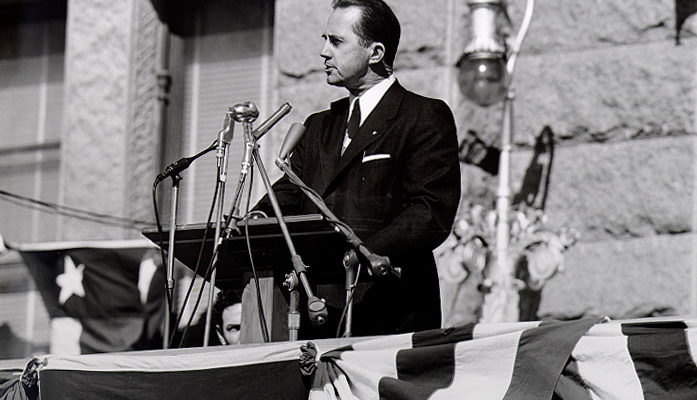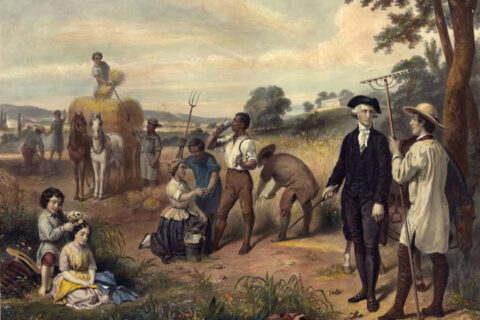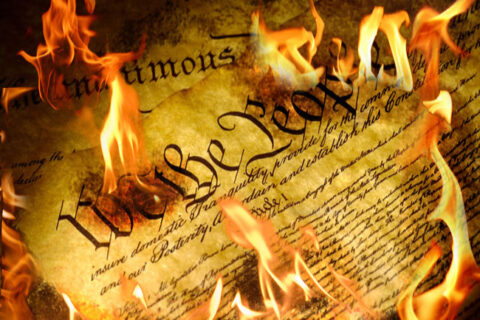Throughout Southern history there has existed a salient cultural dichotomy differentiating the Planter, later the Southern upper-class before and after the War, and its modern successor, the political class, from that of the poor white class. Though this societal phenomenon still continues as a contemporary socio-cultural factor, the influence of it has largely been diminished. However, it once held much more influence and power over Southern society and often was the deciding factor behind many elections, both state and federal.
Though each of these classes had their own unique characteristics and motivations, modern leftist education and media spreads the same message that all Southerners pre-Civil Rights Era were, in essence, pure evil. This essay seeks to detail the differences in characteristics and influence these two classes once held on Southern society, bringing a better sense of understanding on the most hated demographic in American history – the Southerner.
There have been three major “eras” of the upper-class of Southern society. First was the aristocracy and gentry of antebellum Dixie, second was the Jim Crow upper-class, and third has been the Post-Jim Crow ruling class. These three classes tend to comprise the majority of the political class and overlap with each other often, with many wealthier and influential Southern families able to trace their lineage to the antebellum aristocrats.
The upper-class Southerners contributed greatly to Southern culture throughout their history. They were responsible for the beautiful organization of antebellum social customs, comprised the majority of the Confederate officers, and led Dixie through many troubling periods following the War Between the States, being the primary force behind the Redeemers, the States’ Rights Lost Cause, and controversial Populist Movement of the late 19th century. Many also carried on the mostly Deep South tradition, which had developed after Reconstruction, of populist movements and political figures.
This class gave rise to some of the greatest statesmen in Southern history, including Ross Barnett and Theodore Bilbo of Mississippi, Allan Shivers of Texas, George Wallace of Alabama, Eugene Talmadge and his son Herman Talmadge of Georgia, Leander Perez and Huey Long of Louisiana, and Strom Thurmond of South Carolina, all of whom characterized the populist sentiments of the Deep South. Despite the vitriolic rhetoric articulated by contemporary historians and educators, these statesmen seldom found motivation for their action in hatred for the Negro race.
They, instead, stood upon segregationist platforms primarily because they rightly saw the Civil Rights movement as a Communist takeover of the political sphere; additionally, they foresaw the collapse of societal order, the destruction of the Negro community, and the inability for their people, the Dixian people, to assert their influence within the political sphere. The largely founding stock of the Anglo-Saxon South was the last bastion of genuine conservative thought and politics in America at the time, and the Southern segregationists knew it.

Despite their largely positive influence, not every action committed was beneficial to the South. The wealthy below the Mason-Dixon Line tended to lean towards moderate political and social positions for their own personal gain, much to the chagrin of poor whites. Additionally, they controlled all aspects of the political sphere during the antebellum period and Reconstruction, resulting in poor whites turning against them after the former Planters “Redeemed” the South. They had a propensity during and after the Civil Rights Era to turn their backs on their Southern constituents for political and social gain and opposed resistance to the Communist backed left-wing legislation, just as many had done during Reconstruction.
Perhaps worst of all their traits, the upper-class Southerners cast away their responsibilities of being shepherds and leaders following the Communist Civil Rights Era, in favor of wealth and alliances with Yankee GOP financiers. They dissolved their political bloc and influence in the Democratic party and moved to the anti-Southern Republican Party, whilst failing to build a conservative faction within the party and catering to every ideal and belief of the Party of Lincoln. Only a few, such as Ross Barnett, never apologized for their actions.
Poor white Southerners were often presented as a foil to the wealthier white classes. Little has changed for poor whites throughout Southern history; many former Planters joined their ranks following the War, largely adopting the ideas and customs of poor whites in the process, with others attempting to reclaim wealth and status again. During the antebellum period, poor whites had little influence within the political sphere. They often remained poor and found social mobility difficult. Only the Planter class was able move into politics, and even they often mortgaged, as collateral, the slaves and property holdings they owned. Poor whites defined themselves by their hard work and hardy nature; they withstood miserable climates, tough working conditions, high mortality rates and diseases, and excessive violence, receiving little reward in the process in what was a largely unrecognized Wild West.
This class constituted the primary foundation of the Confederate Army. Their tough skin and patriotic nature, a tradition caused by being a population mostly comprised of descendants of revolutionaries and founding stock Americans, made for effective soldiers who could withstand the debilitating conditions of fighting the War and gave them the mindset of unceasing bravery in the face of defeat. Poor whites suffered the most from the war due to receiving the most casualties during the war and being the primary target of malicious Union Army war crimes.
Their political influence began to assert itself during Reconstruction. Though often frustrated with advantages former Planters continued to have after the War, poor whites near unanimously voted for them to rid Dixie of the Reconstruction GOP politicians, resulting in the Democratic politicians of the time being nicknamed the Redeemers. Despite the “redemption” of Dixie and beginning of the Jim Crow Era at the hands of the Southern faction of the Bourbon Democrats, poor whites were fed up with many of the policies and the permanent occupation of the political sphere by wealthy whites. Due to the effects of the War, poor whites were granted some social mobility. This resulted in the rise of the Populist Movement within the South, largely focusing on poor farmers. The Populist Movement, in conjunction with the Jim Crow Era, produced a trend of racially motivated demagoguery within the South, especially within the Deep South. This tradition carried over into the mid-20th century and produced many of the great aforementioned statesmen.
Much like the wealthier class, poor whites had many negative traits. Most notably, they were, and to an extent still are, much more prone to violence than whites anywhere else in the country, contributing to the difficulty many found in populating and civilizing the Deep South. The violence developed much more radically and chaotically during Reconstruction, with poor whites forming most of the the violent vigilante groups during the time. The most notorious group being the Ku Klux Klan. The violent acts also carried over into the Jim Crow Era, orchestrated largely by wealthier whites to quell many violent tendencies of poor whites, while also solidifying their own political and financial power, and the most notorious acts of unjustified violence were the Tulsa Riots, the Freedom Summer Murders, rabid Ku Klux violence, and the murder of Emmett Till. All of these were perpetrated by poor members of society lacking in self-control and leadership. The violent tendencies of these whites led to a collapse of political capital after World War II and contributed heavily to the end of segregation. Though many Southern politicians betrayed their constituents, much of their social image declined due to the negative image of the poor members of the states they represented.

The South’s socio-economic stratum presents a unique cultural and political history with both the upper and lower members of society reflecting each other as mirror opposites. They both contributed positive and negative factors to the development of Southern society and the manner in which politics and cultural developments were, and to a degree still are, conducted within the region. These two classes continue to be the most hated demographics in America to this day, with the wealthy being hated for their ownership of slaves and implementation of Jim Crow laws, despite their more moderate take on racial issues. And, the poor whites being hated for their violent tendencies and more draconian views on race.
Both of the classes are largely comprised of the Anglo-Celtic founding stock of the country and hold more conservative views, as well as ties to Southern land, than most middle-class Southern whites and whites in other areas of the country. Unlike the middle-class, which comprises the largest constituency of consumerism and lack of continuing the Southern tradition, the wealthier and poor classes of Southerners were, and are, traditionally the brunt of resistance to liberal politics. Unlike the rhetoric of contemporary social educators, the two classes historically are not one and the same, but maintained a tradition of feeding off of each other, often to the benefit of the other.
This dichotomy must be understood to rebuild the foundation of Southern politics within contemporary society – beginning the end of the crippled state of Southern politics and allowing for the rebuilding of a Southern Political Bloc.
“The White people of the South are the greatest minority in this nation. They deserve consideration and understanding instead of the persecution of twisted propaganda.” –Strom Thurmond






Maybe the best essay ever written on this site. As a Deep South southerner from the poor class, I can look through our history and see that it has always been the violent temper that causes us to shoot ourselves in the foot. If we’re able to control our passions and root out the violent agitators that are planted among us, then, and only then, will our adversaries loose their grip over us. It is true that the narrative of the violent white southerner is overblown, especially in relation to other ethnic groups, however, there is enough truth behind the narrative to give it power.
“Be ye as peaceful as doves and as stubborn as mules.”
I’m flattered you enjoy my content so much. Thank you.
“If we’re able to control our passions and root out the violent agitators that are planted among us, then, and only then, will our adversaries loose their grip over us.” Bravo, Mr Norris! I expect your next words of wisdom will be “Heritage Not Hate”…
Building a movement involves appealing to Southern hearts and minds. We here loathe the “heritage not hate” message but also acknowledge that violent behavior and rhetoric which illuminates signs of mental instability is a losing strategy.
Mr. Norris was not wrong.
You both are confusing “historic forms of justice” with the inherently violent nature of a certain ethnic group. Greatly contributed to, on both accounts, by the self serving, greedy, elitist tendencies of the self proclaimed Southern aristocracy…
Lol honestly I don’t even know what point you’re trying to make with that statement